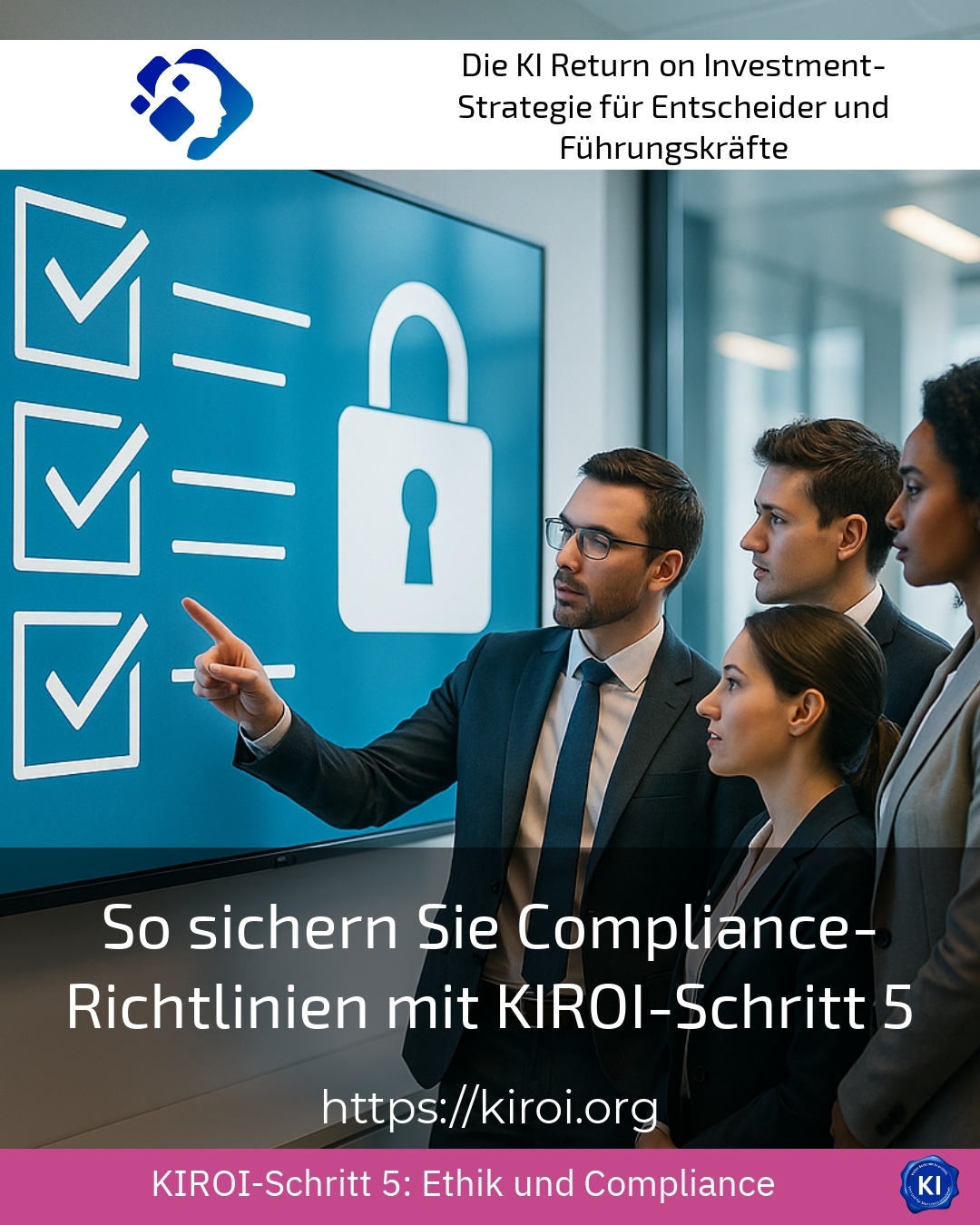Compliance guidelines are essential today to ensure adherence to legal requirements and internal rules in companies. Step 5 in the KIROI approach helps to anchor these guidelines sustainably and implement them effectively. In this article, you will learn how you can strengthen your compliance guidelines with KIROI Step 5 through consistent support, clear communication and practical integration.
Living compliance guidelines successfully: The importance of step 5
The fifth step in the KIROI process is aimed at not only formulating compliance guidelines, but also integrating them into day-to-day business. The focus here is on training, transparency and active reporting. Companies from a wide range of industries report that this approach significantly improves acceptance and understanding among employees.
An example from the financial sector shows how regular workshops on the topic of money laundering prevention increase employee awareness. A manufacturing company, on the other hand, implemented digital tools in step 5 to continuously monitor compliance with occupational safety regulations and recognise deviations at an early stage. Many organisations in the service sector also rely on an open error culture, which is promoted by step 5 and thus avoids compliance violations.
BEST PRACTICE with one customer (name hidden due to NDA contract) With the help of KIROI Step 5, a sustainable monitoring system was introduced that documents monthly compliance with important data protection requirements. Targeted feedback was used to optimise processes and further increase compliance security.
Clear communication as the basis for compliance guidelines
As part of step 5, communication is crucial: compliance guidelines must not disappear into document drawers. The content must be understandable and regularly discussed at all hierarchical levels. For example, an IT company offers short videos and e-learning courses to explain data protection regulations in a practical way. At the same time, medium-sized retail companies use internal newsletters and small face-to-face training sessions to make the topics tangible. Uncertainties are also clarified and responsibilities reinforced through communicative dialogue.
The automotive industry has had good experiences with so-called „compliance days“, where affected teams are actively involved in order to discuss specific use cases. This creates lively learning environments that make compliance guidelines tangible as valuable guidelines.
Practical integration and monitoring in everyday life
KIROI Step 5 recommends not looking at compliance guidelines in isolation, but integrating them into daily work processes. This is achieved through clear responsibilities and controlled processes. One logistics company, for example, uses automated checklists to document compliance with its environmental and safety requirements. In the financial sector, software is used that automatically sounds the alarm in the event of suspicious cases. Service providers establish regular audits that reveal weak points and initiate targeted improvements.
In addition, companies from the food production sector have shown that regular employee rounds and feedback sessions support the implementation of hygiene regulations. This not only strengthens compliance guidelines, but also employee motivation.
Compliance guidelines with KIROI Step 5: Tips for sustainable safeguarding
Step 5 recommends some practical measures to ensure that compliance guidelines remain in place in the long term:
- Continuous training: Train employees regularly on current compliance topics.
- Open error culture: Encourage the reporting of irregularities without fear of sanctions.
- Utilise technology: Use digital tools that facilitate monitoring and documentation.
- Clearly define responsibilities: Everyone in the company should know their role in the compliance process.
- Promote transparency: Communicate compliance measures openly and comprehensibly for everyone involved.
A manufacturing company documented its annual compliance with environmental regulations transparently and was therefore able to process complaints at an early stage. In step 5, an IT service provider developed an internal reporting system that quickly localises data protection incidents. In the healthcare sector, this approach was used to consistently monitor guidelines on patient safety, for example.
My analysis
Compliance guidelines often remain ineffective without active implementation. KIROI Step 5 supports companies in bringing existing guidelines to life and securing them in the long term. Targeted training, open communication and practical integration into work processes create resilient structures. This not only promotes compliance with legal requirements, but also strengthens ethical standards and the trust of all those involved. The wide range of examples from various industries shows that this approach can be flexibly adapted to specific needs and thus makes an important contribution to business success.
Further links from the text above:
Compliance (business administration) - Wikipedia
How to implement compliance guidelines effectively - DataGuard
Compliance: definition, tasks, guidelines - Personio
Definition: Compliance guidelines - Navan
Efficient policy management: 5 tips against chaos - EQS
For more information and if you have any questions, please contact Contact us or read more blog posts on the topic Artificial intelligence here.















